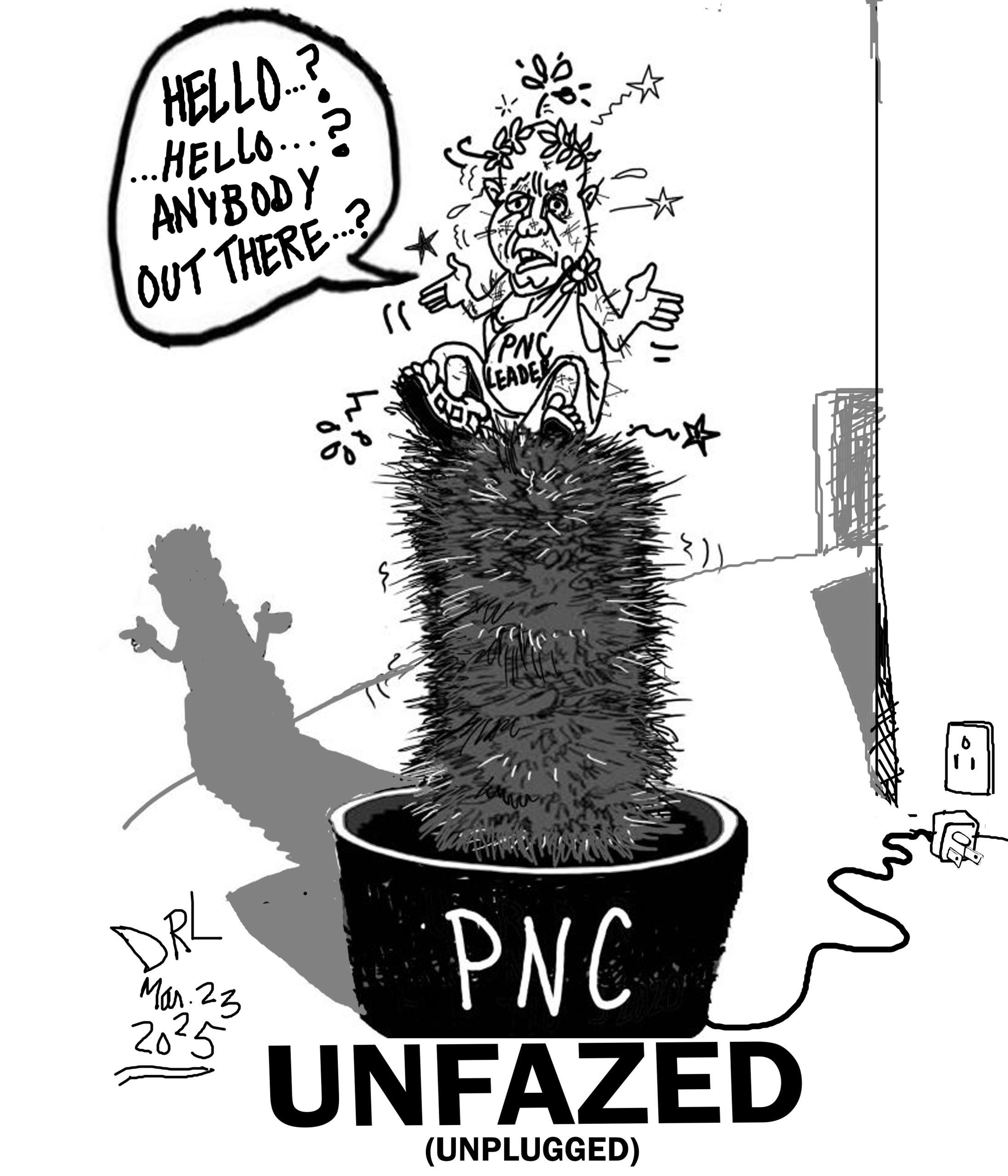Latest update March 28th, 2025 1:00 AM
Latest News
- “It will be a very bad day for Venezuelan if they attack Guyana or ExxonMobil”—Rubio declares
- Guyana gets info on U.S. tax evasion allegations against Mohameds, Mae Thomas
- US$35 injected into banking system to address foreign currency shortage—VP Jagdeo
- Citizens to stage protest today against lack of access to information in Guyana
- Guyana vows to stand with U.S.
What is our incentive for pumping oil at a loss?
Apr 14, 2020 Letters
DEAR EDITOR,
Many of the world’s oil producers have recently agreed to cut back oil production by 10 million barrels a day. The world is in quarantine mode. Demand for oil has dropped significantly. If demand drops and supply stays the same, then the law of demand and supply would tell us the price of a commodity like oil must also drop.
The production cutback agreed to by the producers is to try to bring the demand/supply equilibrium to a price point where oil producers can generate enough revenues to run their resource-dependent economies.
Brent Crude, the benchmark for Guyana’s oil, recently went below US$23/barrel – a price not seen for more than a decade. The break-even price for Liza Phase 1 is about US$35/barrel. Hence, it is puzzling why Guyana has not indicated any intention to curtail its oil production. Who benefits when we sell our oil below cost? Certainly, not the Guyanese people.
If an eddo farmer can get GY$230/lb. for her produce, she will do a simple calculation to determine if she can make a profit. If she must pay someone to reap and sell the produce but it costs her at least GY$350/lb., then she will leave them in the ground. It is just commonsense, since selling at a loss would mean she would have to find an extra GY$120 for every pound she sells. For the humble farmer, it is money she cannot afford to throw away.
Guyana’s Liza Phase 1 project is currently ramping up to produce 120,000 barrels of oil per day, that is about 3.6 million barrels a month. If Brent Crude hovers around US$23/barrel, then that is US$12 loss per barrel. Hence, per month, we would be incurring a loss of US$43 million.
Are the oil companies sharing equally in the loss like they do on the 50/50 profit split? The answer is NO. Hess has hedged 80% of its production this year. Its Brent Crude production is hedged at US$60/barrel. Guyana did not hedge, hence, we may sell at a loss while Hess will make a handsome profit.
Recently, Exxon’s CEO, Darren Woods, met with the US President. One of the topics discussed is using the US strategic reserve to store oil. We don’t know the details of that discussion, but it should call into question why Exxon is not cutting production in Guyana. If Exxon can store oil when prices are low and sell when prices are higher then why stop pumping?
Guyana does not have a strategic reserve to store oil, thus it has to take the market price. Therefore it’s at a disadvantage compared to Exxon and Hess when prices are below cost.
The daily world cut in production agreed to is roughly 10%, but the virus has caused the demand for oil to drop by 35%. Hence, prices will stay low for months.
Let’s explore a scenario where for a month the price of oil is US$23. Now, since Guyana didn’t hedge oil prices and has no means to store its oil, it must take the price it receives on the market. Assuming 3.6 million barrels in a month, then Guyana’s share of the 50/50 profit share of 3.6 million barrels is 12.5% of 3.6 million barrels (0.45 million barrels) would mean we get about US$10 million at market rates.
In the case of Hess, with its hedges it may net US$55/barrel (assuming hedges had cost US$5/barrel). That would mean that Hess would receive about US$25 million. Thus, when prices drop below break-even cost of US$35/barrel it’s to the oil companies benefit to keep pumping.
Additionally, let’s not forget that because of the lack of ring fencing, expenses will stretch far into the future. Thus, although we receive US$10 million in the scenario above, we are dipping into future profits, because we are pumping at a loss and Exxon and the oil companies are fully compensated for their expenses, but at a monthly cap at 75%. Thus, at some point in the future we will have to pay for that US$10 million.
We know Guyana’s first sale of oil was for US$55 million. But how much of it has been spent to help us with the virus that has all but shut down the country? Probably none, otherwise, the Finance Minister wouldn’t be begging the World Bank for US$5 million. We have Guyanese donating money to help buy cloth masks and others buying eddoes to make soup for the homeless. If the revenue from oil is not being used to help Guyanese people, then what is our incentive for pumping oil at a loss?
Hedging is expensive. It is effectively insurance against price drops. After a disaster, your insurance premiums go up. Hence, if prices return to US$55/barrel, to hedge at that price will be significantly more expensive compared to last year.
It may be years before Guyana may even consider building a strategic reserve capable of holding the oil we produce. We need to increase the levers we can pull to ensure we are not selling our oil at a loss. Before we approve Payara and Hammerhead, let’s renegotiate the contract to include control of how much oil is being pumped given market conditions.
Darshanand Khusial on behalf OGGN
Share this:
- Click to print (Opens in new window)
- Click to email a link to a friend (Opens in new window)
- Click to share on Facebook (Opens in new window)
- Click to share on WhatsApp (Opens in new window)
- Click to share on Twitter (Opens in new window)
- Click to share on Pinterest (Opens in new window)
- Click to share on Pocket (Opens in new window)
- Click to share on Tumblr (Opens in new window)
- Click to share on Reddit (Opens in new window)
- Click to share on LinkedIn (Opens in new window)
Related
Similar Articles

The Glenn Lall Show|| March, 17th, 2025
Follow on Tik Tok @Glennlall
THE BLUNT OF THE DAY

Sports
Mar 28, 2025
Dear Editor, As we continue the debate about Guyana`s ethnic diversity and the ethnic conflict which has afflicted our society, there are those who attribute our problem solely to the politicians and...Features/Columnists
The PPP has started the intimidation
Peeping Tom… Kaieteur News- In politics, as in life, what goes around comes around. The People’s Progressive Party/Civic... more
The Caribbean: Destined to Grin and Bear the Consequences of Its Self-Created Vulnerabilities?
By Sir Ronald Sanders For decades, many Caribbean nations have grappled with dependence on a small number of powerful countries... more
Publisher’s Note
Freedom of speech is our core value at Kaieteur News. If the letter/e-mail you sent was not published, and you believe that its contents were not libellous, let us know, please contact us by phone or email.
Feel free to send us your comments and/or criticisms.
Contact: 624-6456; 225-8452; 225-8458; 225-8463; 225-8465; 225-8473 or 225-8491.
Or by Email: [email protected] / [email protected]
Weekend Cartoon















